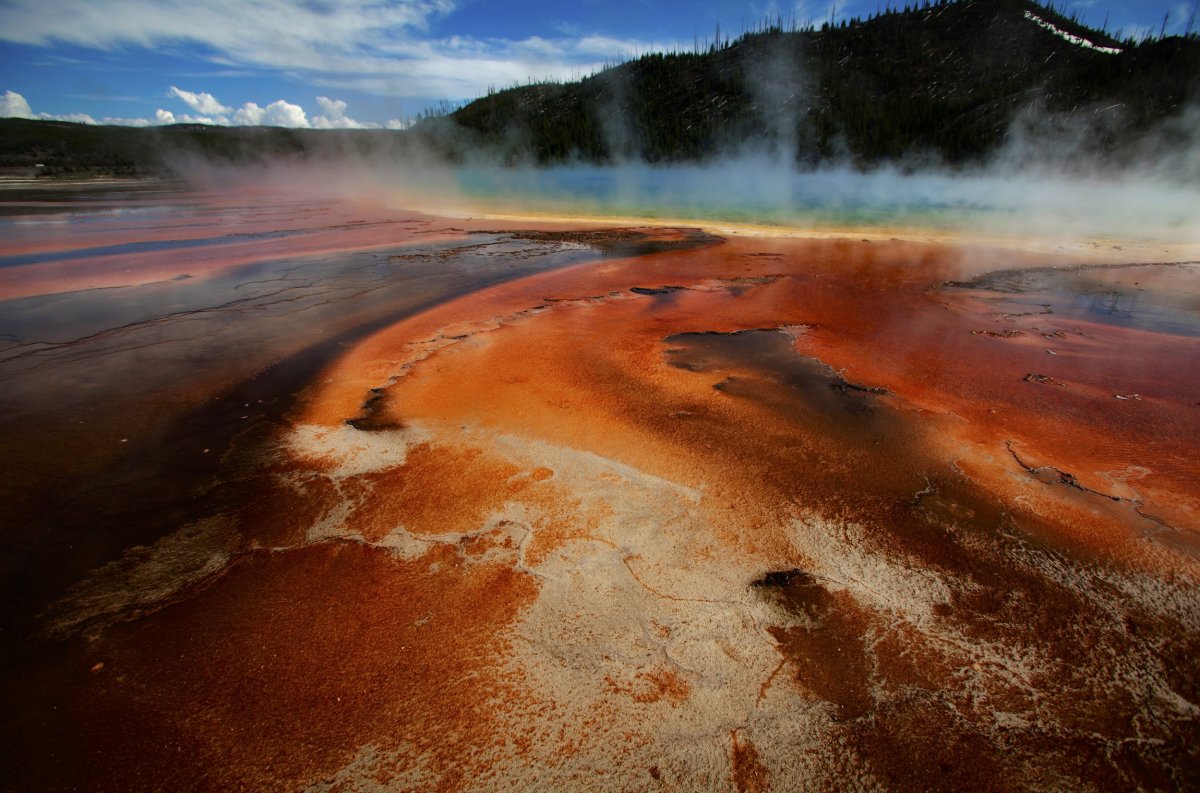The Yellowstone supervolcano is something of a scientific mystery. No, not whether it will erupt tons of hot magma any time soon—it won't. What's puzzling is where all the heat comes from. Scientists have been fighting over the question for decades, but a new paper might put the arguments to rest.
That's because it offers the best evidence yet for a 200-mile-wide plume of hot rock rising up through the Earth's mantle, the thick layer of rock between the thin crust at the surface and the deep molten core. Even beyond Yellowstone itself, that part of Earth has always been a bit of a puzzle for scientists.
"I think we are moving beyond a cartoon stage of understanding now," Lijun Liu, a geologist at the University of Illinois who wasn't involved in the new research, told Newsweek.
Read more: Video: World's Largest Geyser Erupts at Yellowstone National Park
Yellowstone is a particularly confusing volcano because it sits in the middle of a continental plate, away from the boundaries where melting rock traditionally fuels volcanic activity. Some scientists have argued that means Yellowstone must feed off what's called a mantle plume, a column of hot rock rising from near the core; others have argued plate tectonics could still be responsible.
"The controversy has kind of been brewing for quite a long time," Victor Camp, who studies volcanoes at San Diego State University and was not involved in this research, told Newsweek. "Once you get invested, it makes it harder to change your mind—but I think this [paper] will make a difference."
The paper in question was published this week in the journal Nature Geoscience and uses data from a dense network of seismic sensors across the U.S. to trace waves of energy moving through the Earth. Those waves move more slowly through hot rock and faster through cold rock, so scientists can use them to map out the temperature of rock deep below the surface.
Using that technique, the authors of the paper followed a trail of hot rock down to the border between the innermost part of Earth, its liquid iron core, and the mantle that rests above it. Other studies had looked for higher levels of the suspected plume, but not all the way down.

"This takes us much, much much deeper," Camp said. "In order to have true evidence of a mantle plume, we really need a study like this."
Even with the new paper, there are still mysteries surrounding what's happening below Yellowstone. The research builds a very strong connection from the boundary between the core and the mantle up through the bottom part of the mantle, but in the top section of the mantle, things get a little fuzzier.
"This plume is not really very vertical at all," Liu said. "Below Yellowstone is just several blobs of hot mantle that kind of connects to the plume in a very nonlinear way."
And in addition to the main plume, the team found a large hot patch to the west of the volcano, which they couldn't quite connect to the plume itself.
Even though there are still puzzles to be solved at Yellowstone, the paper offers a new understanding of just how connected the layers of our planet are, said the paper's first author Peter Nelson, a doctoral student at the University of Texas at Austin.
"The deepest parts of the Earth do in fact interact with the surface."
Uncommon Knowledge
Newsweek is committed to challenging conventional wisdom and finding connections in the search for common ground.
Newsweek is committed to challenging conventional wisdom and finding connections in the search for common ground.
About the writer
Meghan Bartels is a science journalist based in New York City who covers the science happening on the surface of ... Read more
To read how Newsweek uses AI as a newsroom tool, Click here.








